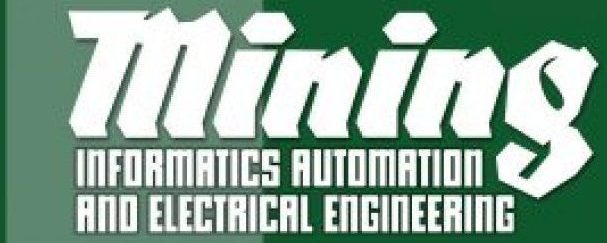Juliusz Krupiński1, Herbert Wirth1
1 Faculty of Geoengineering, Mining and Geology, Wrocław University of Science and Technology, Poland
Opportunities for the future development of energy infrastructure after production closure in the KGHM shaft, by the example of the creation of an underground pumped – storage hydropower plant
The article touches on the technical and technological aspects in the field of the possibility of creating energy infrastructure after the end of production in a selected shaft of “KGHM Polska Miedź S.A.” A cascade system of placing turbines in the shaft was proposed and the possibility of its creation was evaluated, respecting the dimensions of the turbines and the shaft. During the analysis, the relevant turbine capacities, flows, infrastructure dimensions, and possible solutions to overcome the limitations of developing an Underground Peak and Pumped Storage Power Plant (UPSH) in a post-mining facility were examined.
Key words: energy storage, hydroelectric power plant, reclamation, underground pumped
storage hydropower, post-mining facilities
https://doi.org/10.7494/miag.2023.4.556.7
Ryszard Snopkowski1, Marta Sukiennik1, Aneta Napieraj1
1 Faculty of Civil Engineering and Resource Management, AGH University of Krakow, Poland
Decision-making in hard coal mines
with the support of selected stochastic methods
The article presents selected methods of stochastic process modeling that can support decision-makers in Polish hard coal mines. It outlines the classification of determinants that have a significant impact on the processes carried out in the mines. The article also distinguishes between programmed and non-programmed decisions made by the management in the mines. In the following sections, three selected methods are presented, enabling decision-makers to make more effective decisions that may be crucial for the processes implemented in hard coal mines.
Key words: hard coal mining, decision making, stochastic methods
https://doi.org/10.7494/miag.2023.4.556.19
Beata Świątek1
1PORR S.A., Poland
A case study of the TS-26 tunnel – the longest non-urban road tunnel in Poland using NATM technology
The article describes in detail the legal, technical and geological conditions faced by the designers and contractors of the TS-26 tunnel, located within the S3 expressway. The tunnel, which is the longest non-urban road tunnel in Poland, was constructed using the New Austrian Tunnel Construction Method (NATM). The project represented a considerable engineering challenge due to the geological conditions and the need to ensure the highest safety standards. The article describes the design process, including detailed geological analyses, and the construction phases of the tunnel, which included excavation, construction of the primary and secondary lining, and the installation of advanced safety systems. The TS-26 tunnel is a key element of the road infrastructure that will significantly improve communication in the region and support the economic development of Lower Silesia.
Key words: tunnelling, tunnelling and tunnel construction, mining method of tunnelling
https://doi.org/10.7494/miag.2023.4.556.29
Jacek Zarzycki1
1Faculty of Mechanical Engineering and Robotics, AGH University of Krakow, Poland
The influence of selected parameters on the elasticity modulus of conveyor belts with a polyester-polyamide core
The article compiles information on the influence of selected factors on the elasticity modulus of conveyor belts with a textile core. It presents a laboratory method for testing the modulus of elasticity, highlighting how its value changes depending on the load range and temperature. The modulus of elasticity is a parameter essential for the proper design of conveyor belts, especially those that are long or unconventional.
Key words: conveyor belts, modulus of elasticity, influence of temperature and load

